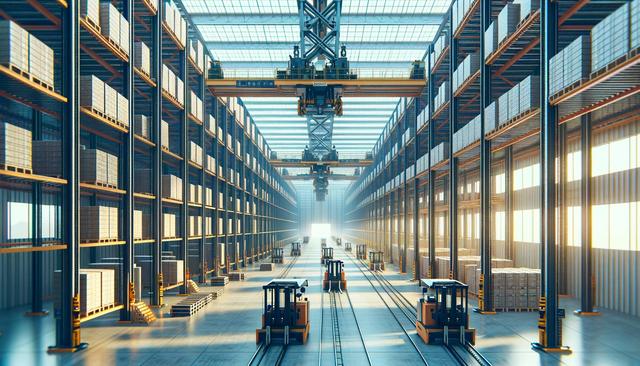
Enhancing Warehouse Efficiency with Automated Stacker Cranes
Understanding the Role of Automated Stacker Cranes
Automated stacker cranes play a pivotal role in modern warehouse operations by replacing manual tasks with high-precision, computer-controlled systems. These cranes are typically used in high-bay warehouses where they navigate narrow aisles to retrieve or store items efficiently. Operating on vertical and horizontal axes, they are capable of handling pallets, bins, or cartons with minimal human intervention. The integration of such systems allows for enhanced accuracy and consistency in storage and retrieval processes, minimizing errors and reducing the need for manual labor.
Incorporating automated stacker cranes into warehouse operations not only ensures speed and precision but also supports better inventory control. With real-time data tracking and integration with warehouse management systems (WMS), these cranes contribute to optimized logistics, timely order fulfillment, and reduced operational bottlenecks. As a result, businesses experience improved service levels and better overall warehouse performance.
Optimizing Space Utilization in High-Density Storage
One of the key advantages of automated stacker cranes is their ability to make the most of available warehouse space. By operating in narrow-aisle environments and reaching significant heights, these systems allow for higher storage density without compromising accessibility. This is particularly beneficial in urban areas or industries where warehouse space is limited or comes at a premium.
Automated stacker cranes facilitate:
- Vertical expansion of storage capabilities without increasing the warehouse footprint
- Efficient use of aisle space by reducing aisle width requirements
- Adaptability to various racking systems such as double-deep or multi-deep storage
These benefits translate into cost savings by maximizing the utility of existing infrastructure and deferring the need for expansion or relocation. Furthermore, enhanced space utilization contributes to more organized and safer warehouse environments.
Reducing Labor Dependency and Enhancing Safety
The automation of storage and retrieval processes through stacker cranes significantly reduces the reliance on manual labor. This not only lowers labor costs but also mitigates the risks associated with repetitive tasks, heavy lifting, and working at heights. Safety is a critical concern in warehouse operations, and automated systems help reduce the frequency of workplace injuries.
By delegating hazardous or physically demanding tasks to machines, businesses can:
- Improve employee well-being and job satisfaction
- Minimize downtime caused by accidents or operator fatigue
- Comply more easily with occupational safety regulations
In addition, automation allows employees to shift their focus to supervisory or value-added roles, contributing to more strategic operations and better resource utilization.
Integrating with Warehouse Management Systems
Automated stacker cranes are most effective when integrated with a robust warehouse management system. This integration supports real-time inventory tracking, intelligent routing, and dynamic slotting strategies. The synergy between hardware and software ensures that each storage and retrieval action is optimized for speed, accuracy, and efficiency.
Key integration features include:
- Real-time inventory updates for better stock visibility
- Automated task assignment and prioritization
- Analytics and reporting tools for performance monitoring
This digital integration streamlines workflows, reduces processing times, and enables proactive decision-making. It also facilitates scalability, allowing businesses to expand their operations or adapt to seasonal demands without significant manual reconfiguration.
Applications Across Different Industries
Automated stacker cranes are used in a broad range of industries, including manufacturing, retail, food and beverage, pharmaceuticals, and logistics. Each sector benefits from the system’s ability to handle a wide variety of goods, maintain high throughput rates, and operate in temperature-controlled environments where human access may be limited.
Examples of industry-specific benefits include:
- In manufacturing: Just-in-time delivery of components to assembly areas
- In retail: Fast and accurate order fulfillment during peak seasons
- In pharmaceuticals: Secure and traceable storage of sensitive products
As supply chains become more complex, the need for reliable and adaptive automation solutions like stacker cranes continues to grow. Businesses seeking to improve their responsiveness and maintain competitiveness are increasingly turning to such technologies to streamline operations and support future growth.
Conclusion
Automated stacker cranes offer a practical and scalable solution for enhancing warehouse efficiency across various industries. By optimizing space, reducing manual labor, improving safety, and integrating seamlessly with digital systems, these technologies support more agile and productive operations. For businesses aiming to meet evolving logistical demands and improve their warehouse performance, investing in automated stacker cranes can be a strategic step toward long-term operational excellence.


